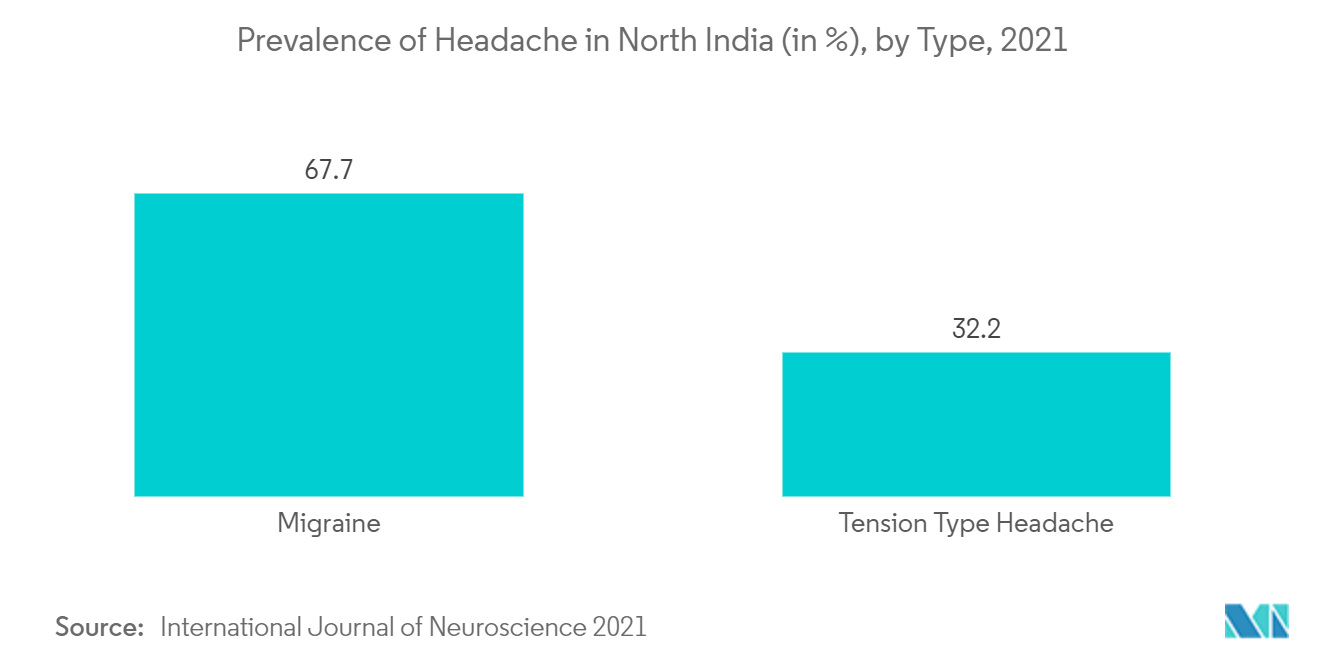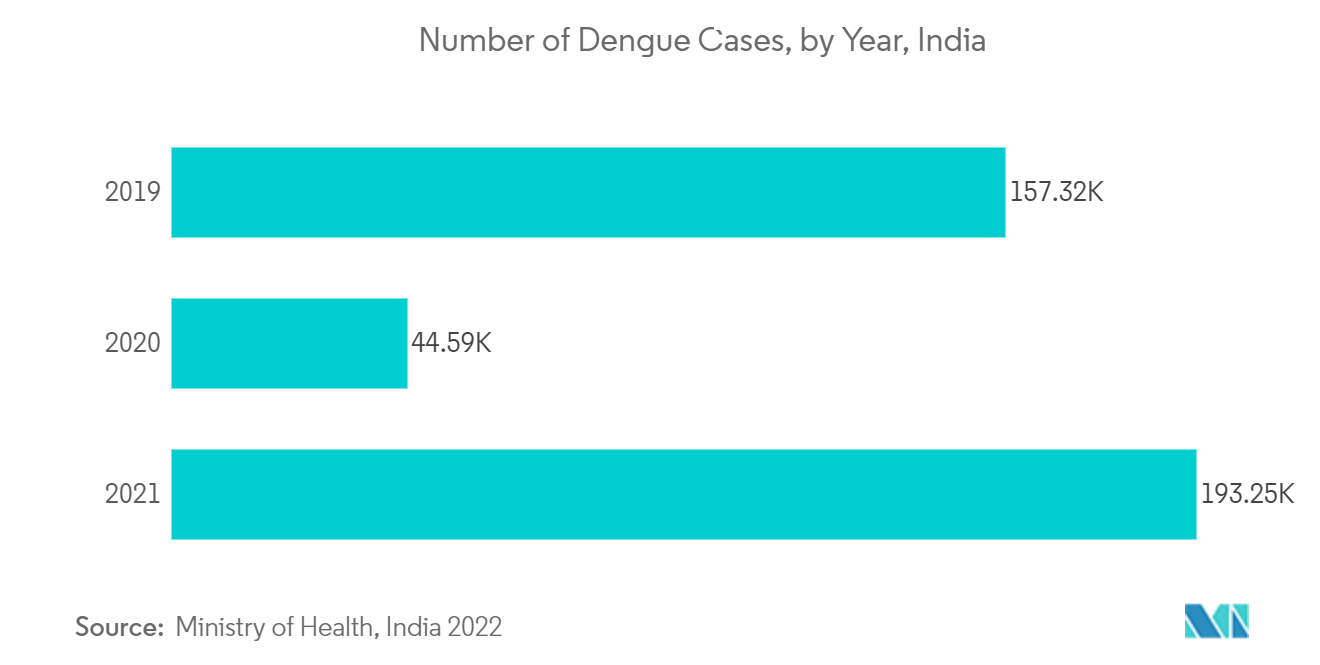Market Trends of India Over-the-counter Drugs (OTC) Industry
This section covers the major market trends shaping the India OTC Market according to our research experts:
The Analgesics Segment is Expected to Register a Large Growth over the Forecast Period
OTC analgesics are commonly used for the treatment and management of headaches, fever, toothache, musculoskeletal injuries, and disorders, as well as menstrual cramps. The issues related to pain are major reasons for the self-medication of analgesics. The Interventional Pain and Spine Centre (IPSC) in September 2021 stated that 19% of the Indian adult population is suffering from chronic pain of some kind, with 25% of prevalence in females. The major OTC analgesics used in India include acetaminophens and nonsteroidal anti-inflammatory drugs (NSAIDs), like aspirin, naproxen, and ibuprofen. The rising trend of self-medication with OTC analgesics and the launch of new products are projected to boost the market growth.
OTC analgesics have various applications in the treatment of fever, musculoskeletal injuries, headache and disorders, arthritis, and menstrual cramps that have increased the overall demand in the market. Other factors, such as obesity, stress, and lifestyle disorders, lead to chronic pain and different kinds of aches. The population is also widespread in developing markets, as well as in high-economic growth countries, such as India. Therefore, in these countries, the population contributes to the increasing demand and growth of analgesics in the market.

Shift Toward Self Medication by Consumers is Expected to Fuel the Market Growth
Self-medication is the act of taking medicines designed and labeled for use in the treatment of common health problems without the prescription of a physician. Easy access, convenience, and time-saving are the most common reasons for self-medication.
As per the data from the Journal of Family Medicine and Primary Care published in May 2022, self-medication is the common practice across India and most people opt for self-medication for diseases such as cold & cough, pain, fever, etc. A survey conducted by the Journal of Family Medicine and Primary Care in May 2022 stated that around 57.7% of the surveyed people tried self-medication of which 39.8% were aged between 28 and 37 years. Among the people who chose self-medication in India, pharmacies are the most common source of knowledge accounting for 64.3%. Hence, with the high percentage of people undergoing self-medication in India, the market for OTC drugs is expected to grow rapidly during the forecast period.
Additionally, a survey conducted by the BioMed Central Journal in August 2022 stated that the prevalence of irrational drug use is about 87% in India. With the increasing use of the internet and social networks across the country, people are more inclined towards self-medication by referring to the information available on the internet. Hence, with such a huge number of people having irrational use of drugs in the country, the market studied is expected to witness strong growth in the coming years.
Furthermore, there is a habitual pattern among the general population that when a disease shows initial symptoms, an OTC drug is preferred to suppress the pain or indication. For instance, in diseases like Dengue, firstly, OTC medicine for fever and chills is taken unless the blood test has confirmed a disease. Hence, with such buying pattern of Indian consumers, the market for OTC drugs is growing rapidly.

